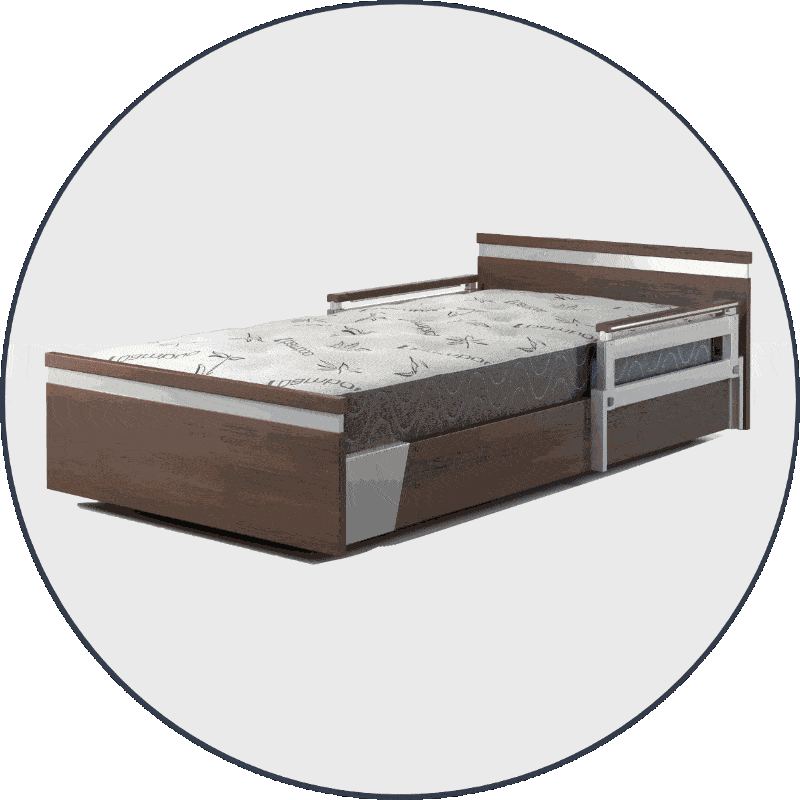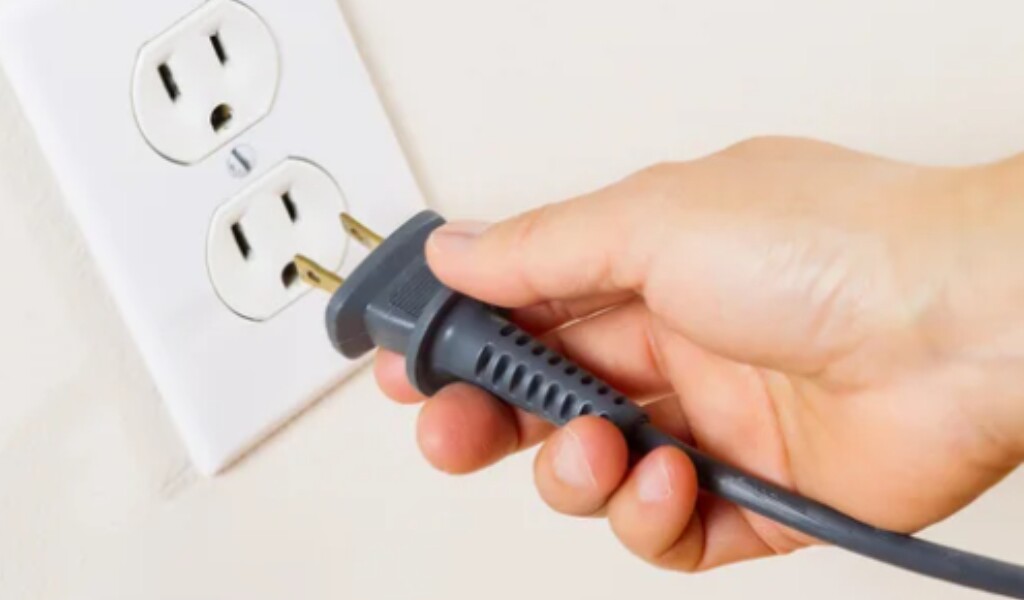The evolution of hospital beds stands as a testament to human ingenuity in the face of medical challenges. From the rudimentary frames of medieval infirmaries to today’s cutting-edge smart beds, this journey reflects our ongoing commitment to enhancing patient care and comfort.
At SonderCare, we intimately know the major role that hospital beds play in the healing process, not just within medical facilities, but increasingly in home care settings. As a pioneer in premium home care equipment, SonderCare is at the forefront of this revolution, bridging the gap between hospital-grade functionality and the comfort of home. Our mission to transform the home care experience aligns perfectly with the historical progression of hospital bed design.
This article serves as an overview and introduction into the fascinating history of hospital beds, tracing their development from ancient civilizations to the modern era. By understanding this history, we can better appreciate the innovative features of today’s hospital beds, including those offered by SonderCare, which are designed to meet the diverse needs of individuals with mobility issues, fall risks, or disabilities, particularly among the aging population. As we explore this timeline, we’ll see how each advancement has contributed to improved patient outcomes, caregiver efficiency, and overall quality of life for those requiring specialized care.
- Hospital beds started in Britain between 1815 and 1825 with adjustable side rails to keep patients safe.
- In 1909, Willis Gatch created the GATCH BED with three movable sections and a crank for easy adjustments.
- By 1945, hospital beds had push-button controls and built-in toilets for better patient care.
- Modern hospital beds include sensors, alarms, wheels, and connect to electronic health records for efficient management.
Pre-Modern Concepts of Healing Beds for Treatment
Medieval and pre-1800s societies did have rudimentary forms of hospital beds, though they were quite different from the modern versions we know today. Here’s an overview of early hospital bed developments:
Ancient and Medieval Hospital Beds
Ancient Egypt
In ancient Egypt, healthcare was closely linked to religion, with temples often serving as healing centers. Evidence suggests that patients rested on simple sleeping platforms or mats made from woven reeds or straw. These could be laid directly on the floor or placed atop basic wooden frames. Comfort was secondary to the spiritual rituals performed by priests and healers, who sought divine intervention for ailments. The concept of specialized hospital furniture was virtually nonexistent; instead, the focus was on the metaphysical aspects of healing.
Ancient Greece
The Greeks advanced medical practice through figures like Hippocrates, who emphasized observation and diagnosis. Healing temples called Asclepieia, dedicated to the god Asclepius, functioned as early hospitals. Patients participated in incubation rites, sleeping overnight in special chambers with the hope of receiving healing visions from the gods. Accommodations were modest—typically simple cots or mats. These sleeping arrangements were considered sufficient, as the therapeutic process was thought to be driven by divine communication rather than physical comfort.
Ancient Rome
Roman contributions to medicine included the establishment of valetudinaria, military hospitals designed to treat wounded soldiers. These facilities featured organized layouts with small wards and individual beds. Beds were constructed from wooden frames with supports made of rope or leather strips, topped with straw-filled mattresses. This design allowed for better sanitation and ease of care. The emphasis on hygiene and systematic treatment in Roman hospitals marked a significant step toward more sophisticated medical environments.
Medieval Period
During the Middle Ages, hospitals existed primarily as charitable institutions run by religious orders. These facilities had basic infirmaries where patients were provided with simple beds. However, these were far from the sophisticated hospital beds we use today.
Medieval hospitals typically had between 10 and 25 beds in villages and small towns, while medium-sized cities had 30 to 100 beds. Large cities had even more substantial facilities. For example, at the end of the 15th century, the Hôtel-Dieu in Paris had several specialized wards with a total of over 300 beds for various types of patients.
Types of Medieval Hospital Beds
Medieval hospital beds were generally simple structures. They often consisted of wooden frames with straw-filled mattresses. In some cases, patients had to share beds due to limited resources.
It’s important to note that medieval hospitals served multiple purposes beyond just medical care. They often provided shelter for travelers, pilgrims, the poor, and the elderly, in addition to caring for the sick.
Early Modern Period
As we approach the 1800s, hospital beds began to evolve:
- During the Renaissance, there was more focus on patient comfort, though beds were still quite basic compared to modern standards.
- The concept of the litter, a simple transportation device made of two long poles with a sheet of cloth between them, influenced early hospital bed design. These were used in Medieval Britain for transporting ill or immobile persons.
- One of the earliest types of modern hospital beds is believed to have appeared in London between 1815 and 1825. This design featured adjustable side rails, marking a significant step towards specialized patient care equipment.
While hospital beds as we know them today didn’t exist before the 1800s, there were certainly precursors that served similar functions in caring for the sick and infirm throughout history.
Early Developments and Innovations in Hospital Beds
The evolution of hospital beds reflects the ongoing pursuit of improved patient care and medical efficiency. From simple wooden frames to sophisticated electronic systems, these essential pieces of medical equipment have undergone significant transformations over the centuries.
The 19th century indeed saw significant breakthroughs in hospital bed design, laying the foundation for modern medical bedding. Building on the information provided, I can add some valuable context and details:
The introduction of adjustable side rails in Britain between 1815 and 1825 was a pivotal moment in hospital bed evolution. This innovation not only enhanced patient safety but also improved the efficiency of medical care. The ability to secure patients in bed reduced the risk of falls and injuries, particularly for those with limited mobility or in post-operative recovery.
Andrew Wuest and Son’s 1874 patent for an adjustable mattress frame was a revolutionary step forward. This invention transformed patient care by allowing the head of the bed to be elevated, which had several important benefits:
- Improved respiratory function: Elevating the upper body helped patients breathe more easily, particularly those with respiratory conditions or recovering from chest surgeries.
- Enhanced circulation: The ability to change positions reduced the risk of blood clots and improved overall circulation.
- Easier patient care: Medical staff could more easily administer treatments and perform examinations with patients in a semi-upright position.
- Increased patient independence: Patients could now eat, read, or engage in other activities while in bed, improving their quality of life during hospital stays.
It’s worth noting that these 19th-century innovations set the stage for further advancements in the early 20th century. In 1909, Dr. Willis Dew Gatch developed the three-segment adjustable bed, which became known as the “Gatch bed”. This design allowed for independent adjustment of the head, foot, and knee sections, providing even greater flexibility in patient positioning and care.
Thank you for providing that additional context. I can certainly expand on this passage and add value to it. Here’s an enhanced version that incorporates the information you’ve provided and adds some additional insights:
The Evolution of Hospital Beds in the Early 20th Century
The early 1900s marked a pivotal era in the development of hospital beds, with innovations that significantly improved patient care and comfort.
The Gatch Bed Revolution
In 1909, Dr. Willis D. Gatch, head of the Department of Surgery at Indiana University School of Medicine, introduced the groundbreaking “Gatch Bed.” This three-segment adjustable bed was a major leap forward in hospital bed design:
- Independent Articulation: The Gatch Bed allowed for separate elevation of the head and foot sections, providing unprecedented flexibility in patient positioning.
- Improved Patient Care: This design facilitated better respiratory support, easier treatment administration, and reduced risks associated with prolonged bed rest.
- Widespread Adoption: The Gatch Bed quickly became the standard in U.S. hospitals, revolutionizing patient care practices.
Electric and Semi-Electric Beds
Building on the Gatch Bed concept, the mid-20th century saw the introduction of electric and semi-electric beds:
- Push-Button Controls: These beds featured easy-to-use controls, allowing for effortless adjustments by both patients and caregivers.
- Enhanced Articulation: Improved articulation capabilities further addressed immobility issues and facilitated patient movement.
- Clinical Benefits: These advancements contributed to quicker recovery times and earlier hospital discharges (Meenatchi et al., 2023).
General Electric’s Innovation
In 1945, General Electric made a significant contribution to hospital bed design:
- Push-Button Beds: GE introduced beds with electric controls, further enhancing ease of use.
- Integrated Toilets: A notable feature was the inclusion of built-in toilets, greatly improving patient comfort and dignity.
Howard Hughes’ Influence
The involvement of Howard Hughes in 1946 is disputed but his celebrity influence brough more attention to quality beds and ultimately highlights the growing focus on patient comfort:
- Custom Design: Following a plane crash, Hughes designed a 6-section bed with 30 electric motors for his personal use.
- Pushing Boundaries: While perhaps excessive, Hughes’ design emphasized the importance of customization and comfort in hospital beds.
Mechatronic Beds
The 1990s saw another leap forward with the introduction of mechatronic beds:
- Advanced Technology: These beds incorporated actuators, IT programs, and specialized accessories (Ghersi et al., 2016).
- Precursor to Smart Beds: Mechatronic beds laid the groundwork for the smart beds of the 21st century, which integrate patient care, assistance, and monitoring functions (Ghersi et al., 2018).
Historical Perspective
The importance of bed design in patient care has been recognized since the 19th century:
- Specialty Beds: Historical evidence shows the development of specialty beds for chronically ill patients, highlighting the long-standing awareness of the bed’s role in patient care (Levine, 1994).
These advancements in hospital bed design throughout the early to mid-20th century reflect a growing understanding of the bed’s crucial role in patient recovery. Each innovation built upon previous designs, continuously improving patient mobility, comfort, and overall healthcare efficiency. This evolution set the stage for the sophisticated, technology-integrated hospital beds we see in modern healthcare settings.
These post-war innovations set the stage for the modern hospital bed, combining patient comfort, caregiver convenience, and advanced technology. The rapid progress made during this period laid the foundation for the sophisticated, multi-functional beds we see in healthcare settings today.
Modern Advances in Hospital Bed Technology
Modern hospital bed technology has undergone a remarkable transformation, evolving from basic electric beds to sophisticated smart systems that integrate patient care, monitoring, and assistance functions. These advanced beds are designed to enhance both patient comfort and caregiver efficiency, addressing the challenges posed by global aging trends and the need for improved healthcare solutions.
Key Innovations in Smart Hospital Beds
Integrated Monitoring Systems
Smart beds now feature embedded sensors that continuously monitor vital signs such as heart rate, respiratory rate, and body temperature. This real-time data is seamlessly transmitted to electronic health records, allowing healthcare providers to track patient status remotely and respond quickly to any changes.
Pressure Injury Prevention
Advanced mattress systems use air flow technology and automated repositioning to reduce the risk of pressure injuries, a common and costly complication in healthcare settings. These features can save hospitals up to $70,000 per incident while improving patient outcomes.
Fall Prevention Technology
Built-in alarm systems detect patient movement and alert staff when a patient attempts to leave the bed, significantly reducing fall risks. This technology integrates with nurse call systems, enabling rapid response and potentially saving hospitals an average of $14,000 per prevented fall.
Automated Positioning
Smart beds offer push-button controls and voice activation features, allowing patients with mobility issues to adjust their position independently. This enhances patient autonomy and reduces the physical strain on caregivers.
Data Collection and Analysis
These beds serve as comprehensive health monitoring systems, collecting and analyzing patient data to improve diagnostic accuracy and treatment planning. The integration with electronic medical records streamlines documentation processes and enhances overall care coordination.
Benefits for Patients and Caregivers
Smart hospital beds significantly improve the patient experience by offering features like USB charging ports, integrated speakers, and remote-controlled adjustments. These comfort-enhancing elements contribute to higher patient satisfaction scores and potentially better health outcomes.
For caregivers, smart beds reduce physical strain by automating tasks like patient turning and weight redistribution. This allows healthcare providers to focus more on critical care activities, potentially improving job satisfaction and reducing burnout.
Challenges and Considerations
While smart hospital beds offer numerous benefits, their implementation comes with challenges. Healthcare facilities must consider factors such as:
- Initial cost and return on investment
- Staff training and adaptation to new technology
- Integration with existing hospital systems
- Data security and privacy concerns
- Maintenance and technical support requirements
Despite these challenges, the potential for improved patient outcomes, increased efficiency, and long-term cost savings make smart hospital beds a promising investment for modern healthcare facilities.
As technology continues to advance, we can expect further innovations in hospital bed design, potentially including AI-driven predictive care models and even more seamless integration with other medical devices and systems. These developments will continue to shape the future of patient care, making hospital stays safer, more comfortable, and more efficient for both patients and healthcare providers.
The journey of hospital bed evolution, from simple wooden frames to sophisticated smart systems, mirrors the advancements in medical care and technology. Today, companies like SonderCare are at the cutting edge of this evolution, offering hospital beds that combine centuries of innovation with modern technology and design. Our range of hospital beds, from the Aura Premium to the Aura Platinum Wide, embodies the culmination of this progress, providing solutions that cater to various needs while prioritizing comfort, safety, and dignity.
As we look to the future, the role of hospital beds in both medical facilities and home care settings will continue to grow in importance. The integration of AI, predictive care models, and seamless connectivity with other medical devices promises to further revolutionize patient care. SonderCare remains committed to being at the forefront of these advancements, continuously innovating to meet the evolving needs of patients and caregivers alike.
By offering hospital beds that are not only functional but also aesthetically pleasing and adaptable to home environments, SonderCare is helping to redefine the concept of home care. Our dedication to improving the quality of life for those requiring specialized care extends beyond our products to our comprehensive customer support and educational resources.
Hospital Bed Evolution Timeline
The history of hospital beds reflects the evolution of medical care and technology over centuries. Initially, beds were simple litters accommodating multiple patients in medieval times (Bouchet, 1999). Gradually, they transformed into more sophisticated designs, with the first mechanical beds appearing in the 19th century (Bouchet, 1999).
The 20th century saw significant advancements, including the development of electric and semi-electric beds up to the 1990s, followed by mechatronic beds (Ghersi et al., 2016). The King’s Fund Bed, launched in the late 1960s, marked a milestone in hospital bed design, incorporating systematic design methods (Lawrence, 2001).
Modern hospital beds have evolved to include various specialized types for different purposes, such as adult, pediatric, labor, and intensive care beds (Fajardo-Ortiz & Fajardo-Dolci, 2010). These advancements reflect changes in materials, dimensions, functionality, aesthetics, and design, driven by medical, anthropological, technological, social, and economic factors (Fajardo-Ortiz & Fajardo-Dolci, 2010).
Frequently Asked Questions About The History Of Hospital Beds
The concept of dedicated beds for patients dates back to ancient times, but the modern hospital bed with adjustable features was invented in the late 19th century. The first patent for an adjustable hospital bed was granted to Andrew Wuest and Son in 1874.
The first electric hospital bed was invented by Dr. Willis Dew Gatch in 1909. This bed, known as the Gatch Bed, allowed patients to be raised into a sitting position and had adjustable head and foot sections.


















